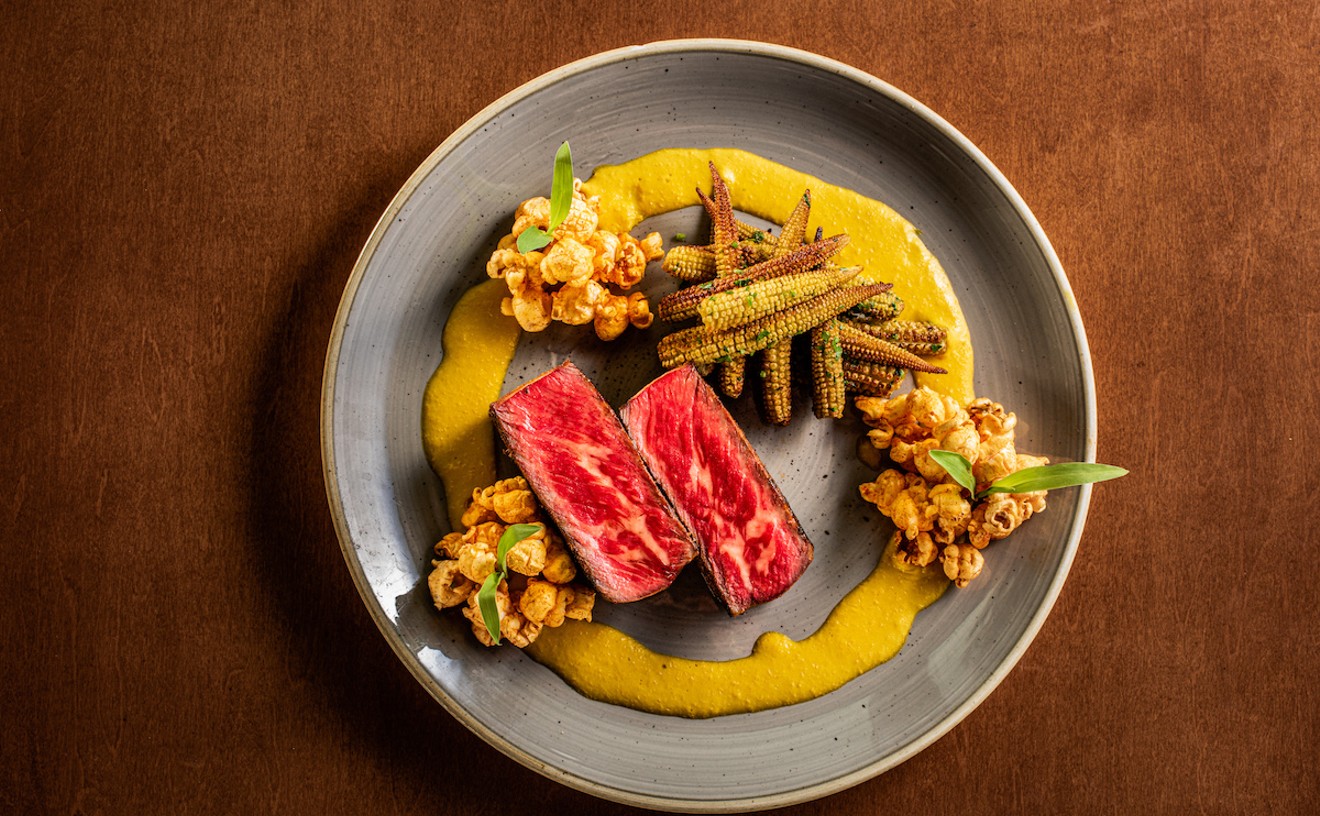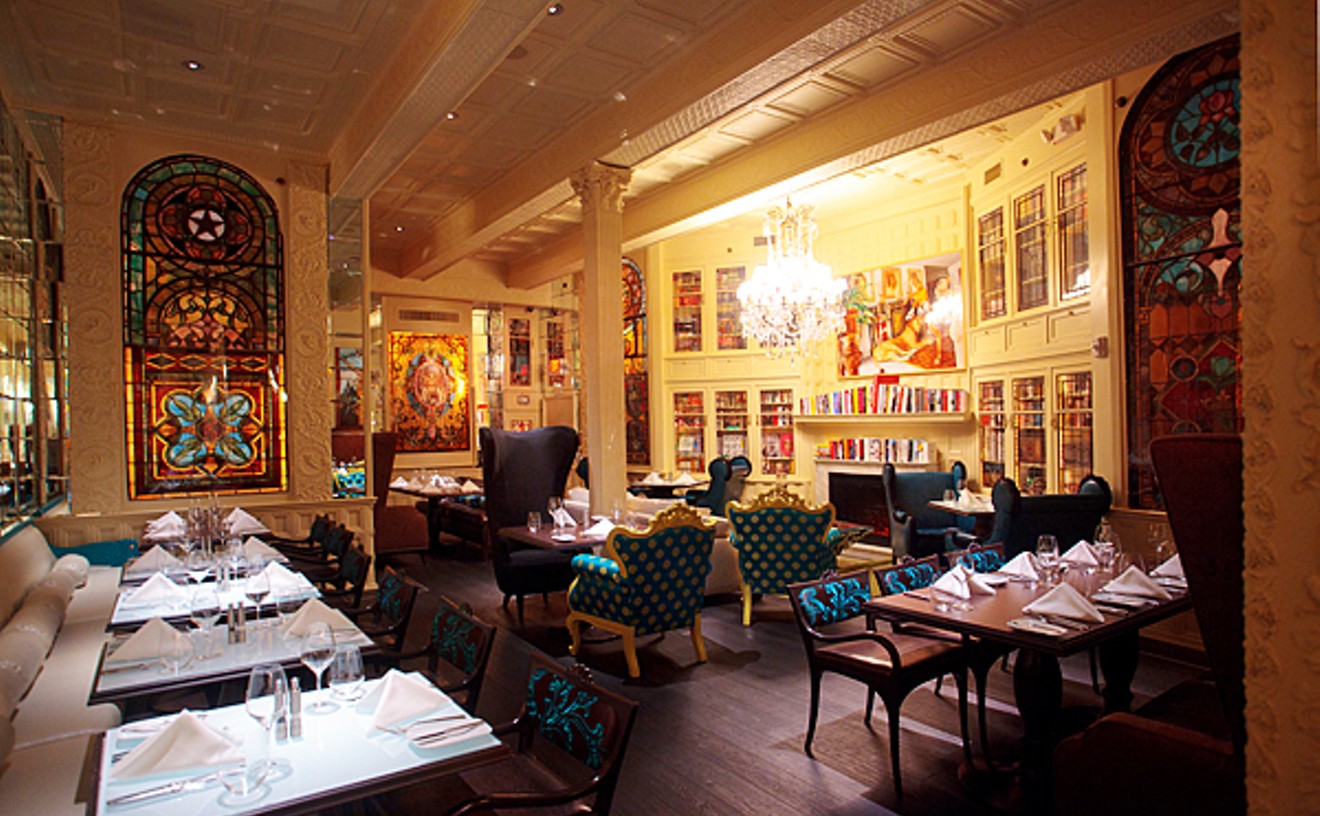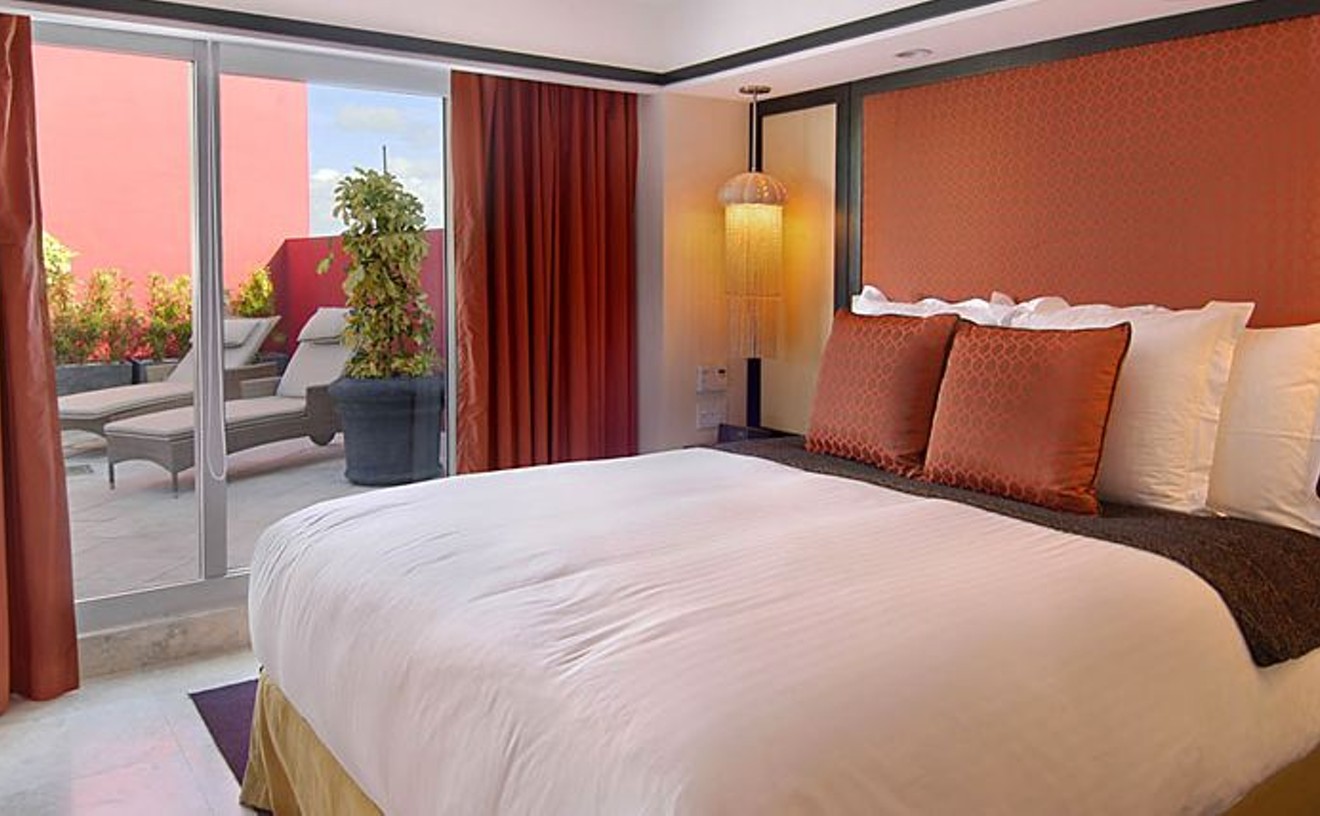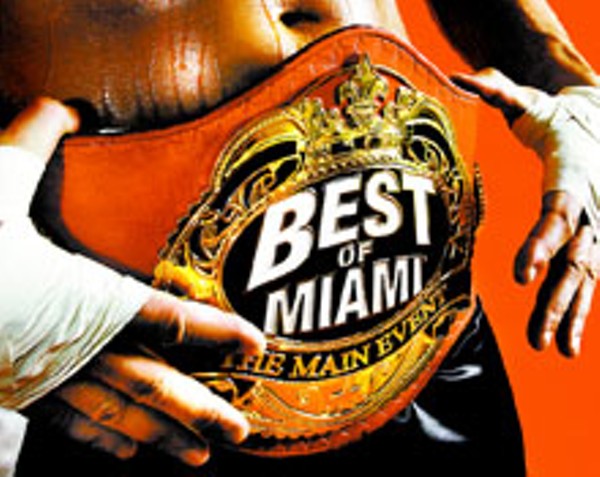Best Place to Celebrate Your Birthday
Rusty Pelican

Photo courtesy of Rusty Pelican
To most people, the ideal way to celebrate a birthday would be in a stunning environment, surrounded by good friends. We might not be able to help you with the friends, but we can with the location: Book a table on the outdoor patio of the Rusty Pelican. Sure, the interior is gorgeous: a collection of brightly colored chandeliers and a classy pianist parked behind a baby grand. But we are in Miami, and dining alfresco is a must. The restaurant's surf-and-turf offerings include elegantly prepared lobster, fish, shrimp, and steak, and you can enjoy a delectable entrée for less than $20. Order a drink: There's a full bar, and the bartender makes a fabulous mojito. Outside on the deck, adjacent to a roaring fire pit, gaze off wistfully at the glittering downtown skyline, and toast to your health. Your birthday dessert -- decorated with a sparkler -- will emerge to the sound of a chorus of singing waiters. Choose a chocolate suicide sundae, cr?ème brûlée, coconut mousse, or -- yum -- apple walnut upside-down pie served with cinnamon ice cream, which will cost no more than $10. Bask in the moment, with the moon shining down on the water and everyone smiling and sending good wishes your way. Maybe it isn't so bad, this getting-older thing.
- 3201 Rickenbacker Cswy., Key Biscayne, 33149 Map
- 305-361-3818
- therustypelican.com
Best Fish Sandwich
Heads or Tails Seafood
A fantastic fish sandwich requires just two things: fresh bread and fresh fish. As you enter Heads or Tails, you can watch fishmongers filleting your lunch in the retail portion of the restaurant. That's fresh. Grab a stool at one of the long counters that line each side of the room and make your decisions: tilapia, grouper, dolphin, or salmon; cleanly fried or griddled with gusto. Lettuce and ripe tomatoes get fluffed into the soft bun, and on the counter are squeeze bottles of condiment sauces that encompass every major color group but blue. Squirt away and create your own edible Jackson Pollock. This is not only a richly rewarding sandwich but also -- at $4.99 -- a great deal.
- 3621 NW 54th St., Miami, 33142 Map
- 305-634-2581
Best Place for Wat?
Sheba Ethiopian Cuisine
Wat? Wat dat? It's a thick stew served atop injera. Injera is a spongy sourdough pancake made from fermented teff. Teff is a teeny grain that tastes like millet. You probably know what millet is. The injera is customarily placed over the surface of the mossob. The mossob is a colorful dining table woven like a basket. Diners seated around the mossob scoop the wat with the injera, using their hands. There is fiery assa wat, made with South African haddock and Ethiopian spices. And atakilt wat, a mix of string beans, carrots, potatoes, and cabbage. And gomen wat with collard greens, and mesir wat with lentils. And don't forget doro wat, which is Ethiopia's national dish, a gingery, spicy stew of chicken legs and thighs. Yes, you're right, that is a lot of wat. But Sheba, a stunning, cosmopolitan Ethiopian eatery adorned in earth tones, dark woods, and African handicrafts, also offers tibs (morsels of chicken, shrimp, or filet mignon sautéed with onions, tomatoes, and green peppers), zilzil (shrimp in honey wine sauce), kitfo (African steak tartare), and other specialties from the owners' native land. All is dee-lish, and not unreasonably priced: Wats, dibs, et cetera, range from $20 to $25, and vegetarian entrées from $13 to $18. Sheba likewise welcomes via its extremely friendly staff and lively, full-service bar. Dat wat make it such a great place to eat.
Best Fresh Seafood
Casablanca Fish Market
When this extraordinary seafood market was evicted from its long-time Watson Island location, Miami lost not only a small piece of its past but also an equally microcosmic yet very pleasant few moments of its multicultural present. Gone are the hordes that used to gather in the scruffy but spacious field that was Casablanca's parking lot, washing down the market's zesty conch salad with juices sold at nearby stands. At its new location next to Joe's and Garcia's, there are a few parking spaces but no room for hanging out. And the freshly paved road out front and new condo building across the street minimalize any old Miami feel. What fortunately has not been lost: wooden boxes piled high with the most floppin'-fresh fish in the county, at prices that are low to near-miraculous. There is still extraordinary variety -- the selection a veritable primer of local seafood. Patrons continue to grab their own mangrove snappers, jacks, bluefish, drums, groupers, yellowtails, et cetera, whole, to be custom-filleted by the veteran counter staff. And if you wipe the frost off the counter's glass, you will see that the conch salad, though harder to find, is still the same too.
Best Restaurant for Dining During a Hurricane
The Forge

billwisserphoto.com
It is a solid building with a great wine cellar. Is there really any need to elaborate further? Well, we are aware Hurricane Andrew flooded the prestigious wine collection in 1992, but the structure has been reinforced to prevent that from happening again. And there are five eclectically appointed dining rooms in which to shelter. Of course, it would be negligent not to mention the stellar quality of food provisions: beluga caviar; lobster, shrimp, and crabmeat martini cocktails; oysters, escargots, a whole raw bar of options; and those thick, juicy dry-aged steaks on which this place has built its reputation. For dessert: chocolate velvet cupcakes or key lime pie? Because The Forge is a large, popular establishment prone to throwing lavish parties, one can assume the inventory of bottled water, and bottled liquor, is fairly extensive too. This is no small consolation. Hurricanes come and go, but the essentials needed for living through them with style remain the same -- and The Forge possesses them all.
- 432 W. 41st St., Miami Beach, 33140 Map
- 305-538-8533
- theforge.com
Best Raw Bar
The Champagne, Crustacean and Caviar Bar
The Setai hotel's Champagne, Crustacean and Caviar Bar is a raw bar. But it's a raw bar on steroids. The fruits de mer are here, albeit a more opulent selection than normal -- not one but two varieties of chilled lobster tail (Maine and Florida); crisp cold-water oysters ($5 each), such as sweet, delicate Kumamotos, buttery Malpeques, and Fanny Bays (a true aficionado's favorite, they are complex and saline, with a fruity finish); giant Johna crab claws ($7 each); and so on. But the menu moves on from there to a mini-Best of the West roundup of maximum luxury snacks from both land and sea. With occasional forays into the Eastern world, this feast includes artisan Italian and Spanish coldcuts and cheeses, Iranian caviar, and Balik -- smoked salmon of the tsars. Also offered are ultra-elegant cooked plates, including seared walnut/cranberry-crusted foie gras ($30), black truffle bruschetta ($36), and diver scallop tartare with sea urchin and caviar ($34). Prices here are breathtaking, but the kids didn't really want to go to grad school, anyway.
Best Restaurant When You're Paying
Timo
They have taken you out for dinner at fine restaurants on numerous occasions. Now it's your turn to reciprocate. You don't want to come across as cheap or ungenerous, but dinner at a local fine-dining establishment will suck the digits right off of your credit card, and moderately priced neighborhood restaurants ... well, to be blunt, there are few capable of impressing. Very few, in fact, but Timo is one such place. The casual Italian/Mediterranean eatery delivers the same crisp white-linen service and stellar cuisine of a far more expensive, pretentious dining establishment. Chef/owner Tim Andriola and partner Rodrigo Martinez cut their teeth at high-end joints, the former making a name for himself as chef de cuisine at Mark's South Beach, the latter as general manager and wine director of Norman's. Dinner is not inexpensive, but it won't break the bank either. A Semolina pizzette with sweet peppers, goat cheese, and oregano is $8, while an appetizer of slow-cooked tripe with bacon, tomato, onion, and Parmesan is $9. Pastas and fish entrées range from $13 to $21, meats and poultry from $18 to $26 -- a steal of a deal for dishes such as veal scaloppine with porcini, sweetbreads, and Marsala; pork chop plumped with prosciutto and buffalo mozzarella and served over risotto; and Vermont quail with chanterelle mushrooms and oxtail ravioli. If you can keep your dinner guests from seeing a menu, they will assume you are paying a whole lot more. And if they do see the menu, they will respect your acumen in discovering so divine a restaurant for so reasonable a cost.
Best Restaurant When Someone Else Is Paying
Vix

There is no charge for walking through the elegant lobby of the Hotel Victor on your way to Vix. A tank of jellyfish glowing in blue light is a free attraction too, as is the shiny open kitchen's nightly revue of culinary theatrics. A basket of warm nan bread freshly baked in a tandoori is likewise complimentary, but just about everything else chef James Wierzelewsi and his kitchen crew prepare comes at a lofty cost. Everything on the menu sounds so good it is tough to choose. A seafood hot pot with coconut sauce is intriguing ($41), but so is a hefty prime rib chop with Portobello mushrooms and housemade steak sauce ($48). "Seven sins of chocolate, as experienced through the spice route" is a sensuous signature dessert ($15). Would a cheese plate be overdoing it? Not if your host is picking up the check. There are multiple selections, but chevrot (goat), Ayrshire cheddar (cow), and Pyrenées Brebis (sheep) provide an apt sampling of farm animal products ($14). Naturally you will want to share a bottle of wine -- add 50 bucks. The final tab for this feast will be sky-high, but the ingeniously crafted contemporary cuisine is so consistently fresh and fabulous, and the service so sublime, that the money spent will seem eminently justifiable. And a downright bargain when it's coming from another person's pocket.
- 1144 Ocean Dr., Miami Beach, 33139 Map
- 305-779-8888
- www.hotelvictorsouthbeach.com
Best Salads
Afterglo
Why are Americans obese? Blame it on Rich Melman and Jerry Orzoff, two Chicago restaurateurs who, in 1971, installed the first known salad bar in their aptly named J.R. Grunts. Ten billion pounds of mayo-soaked surimi salad later, Americans gleefully waddle from all-you-can-eat salad buffet to all-you-can-eat salad buffet, filling their plates with canned vegetables and their heads with delusions of becoming healthier for it. Hardy-har-har, chubbsies -- not gonna happen. It takes a beautiful mind to make you feel good about what you're eating. No, not your beautiful mind -- that's the name of one of the salads at Afterglo: A Beautiful Mind. It brings a brainstorm of baby romaine leaves, blueberries, walnuts, Brazil nuts, sun-dried Himalayan goji berries, Thai coconut meat, pomegranate-chia seed jelly, and ground raw cacao -- all splashed with rosemary, ginkgo, and gotu kola vinaigrette. "Shining, gleaming, streaming, flaxen, waxen" is also a smart, sensual salad, but we would need another page to list all the ingredients. Fact is, the complex, multitexture compositions at this hip South Beach restaurant taste so fantastic it really doesn't matter that the foodstuffs are grown without chemicals and pesticides, and are chock full of proteins, vitamins, minerals, alkalines, antioxidants, living enzymes, and omega-3 fatty acids. The aim is not to leave here with a rosy glow to your cheeks, but to avoid exiting with mayonnaise dripping down your chin.
Best Caesar Salad
Joe Allen
Making caesar salad is like playing rock guitar: Everyone does it, but hardly anyone does it well. Joe Allen does caesar salad well. The world's most popular salad (well, it seems to be, anyway) arrives at your table a study in pastels -- pale, crisp inner leaves of romaine under a blizzard of Parmesan cheese studded with crunchy, golden croutons, and tossed with a properly rich, creamy dressing. Unlike some, Joe Allen's salad ($7 for a small, $13.50 entrée-size) whispers rather than shouts the classic caesar trio of garlic, anchovy, and lemon, leaving your breath acceptable to polite company. During peak hours, you probably will have to shout to be heard by anyone at your table, though; the noise level here can rival that of the most egregiously overamplified rock guitarist.





